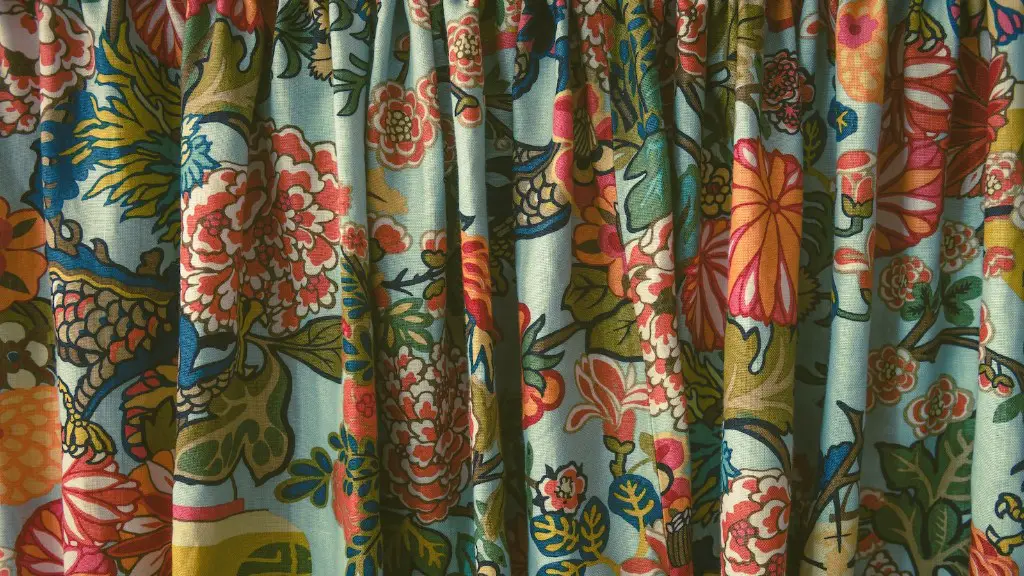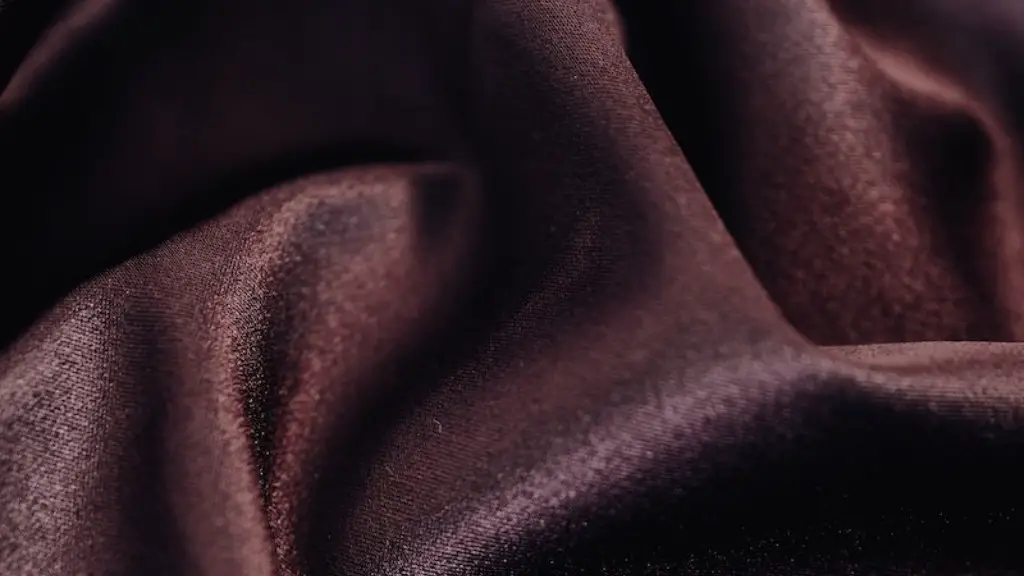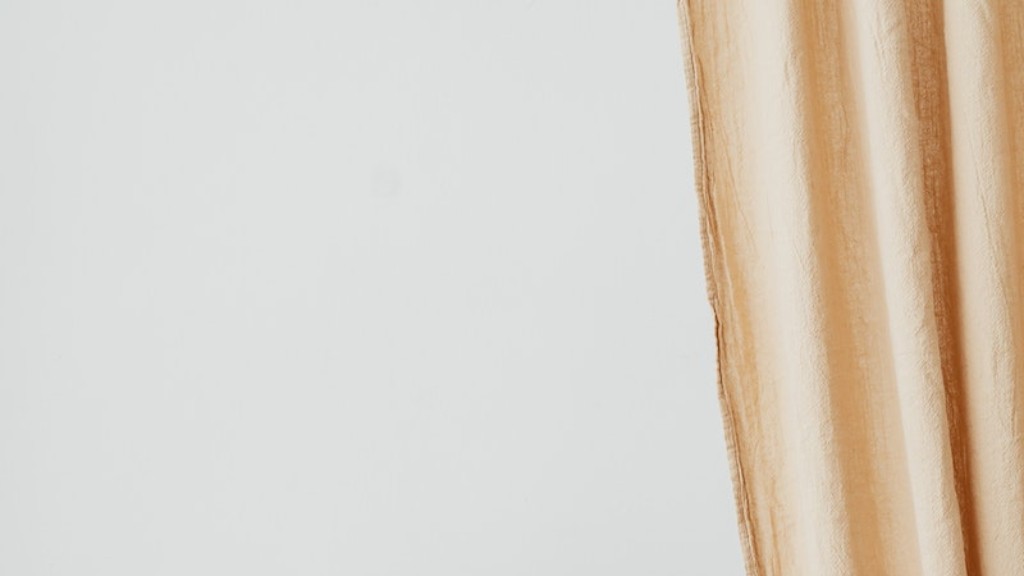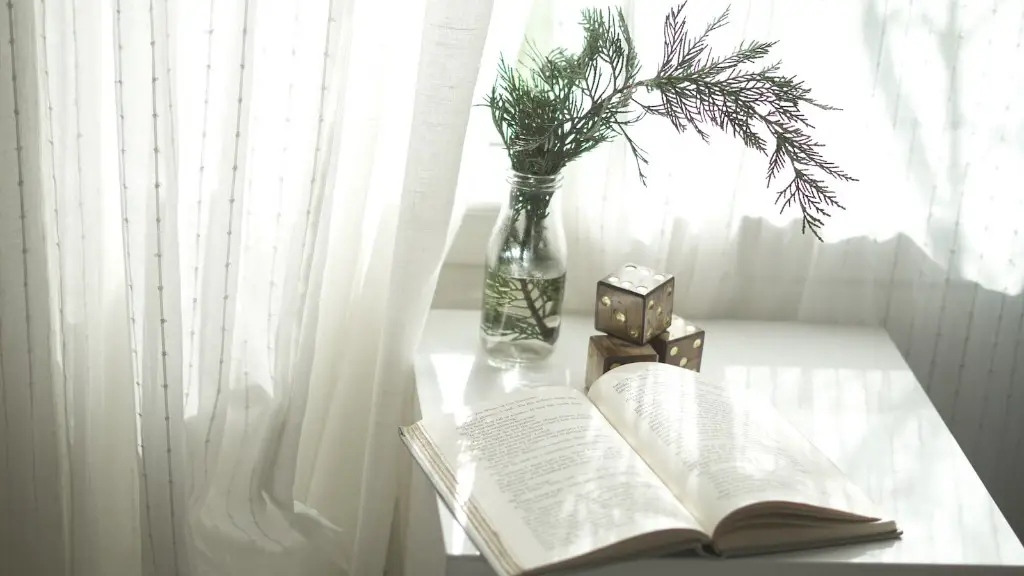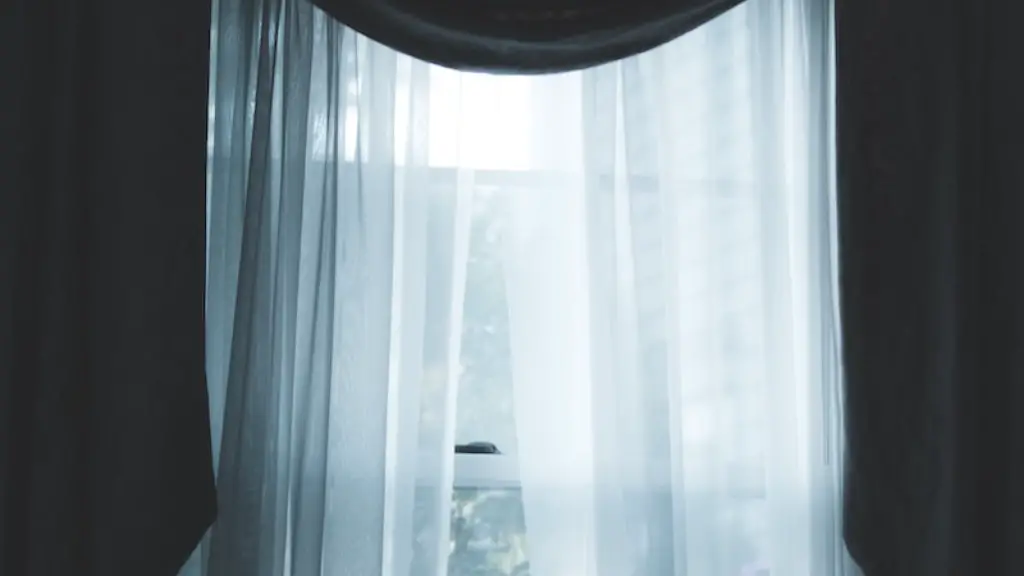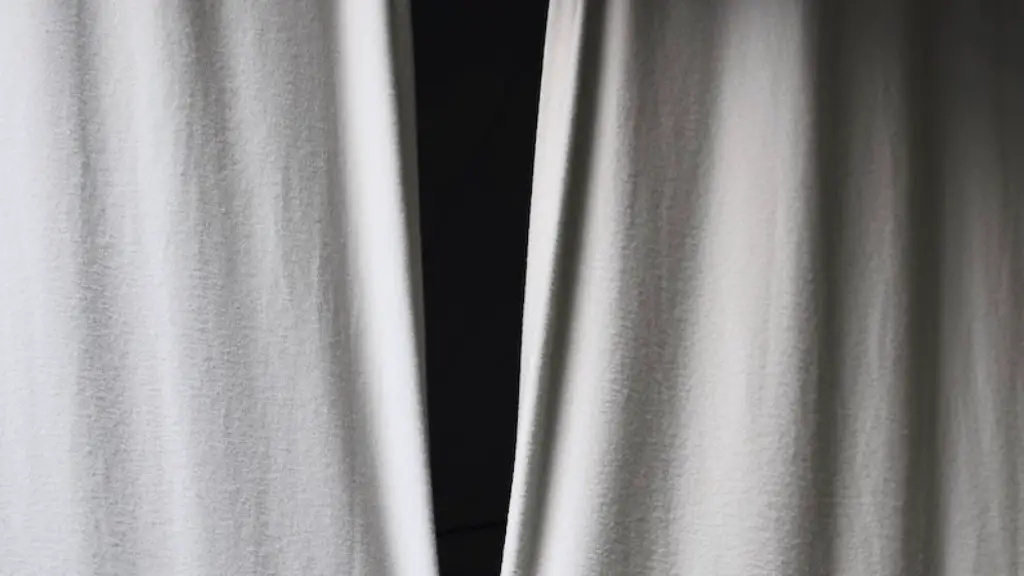Blind hemming is a method of sewing where the stitches are not visible from the right side of the fabric. It is often used for hemming curtains, as it gives a neater finish.
To blind hem curtains on a sewing machine, start by folding up the hem so that the raw edge is hidden. Then, using a blind hem stitch, sew along the fold. The stitches will be visible on the wrong side of the fabric, but will be barely visible on the right side.
First, you’ll need to gather your materials. For this project, you’ll need a sewing machine, thread, scissors, a straight pin, and a iron. You’ll also need your curtains, of course! Once you have everything gathered, you’ll want to start by ironing your curtains. This will make them easier to work with and will help give your finished product a neater look.
Next, you’ll need to fold up the bottom hem of your curtains. You’ll want to do this so that the raw edge is hidden and the pretty side of the fabric is showing. Once you’ve ironed the fold in place, you’re ready to start sewing.
To begin, you’ll want to set your sewing machine to a straight stitch. Once you’ve done that, you’ll want to stitch along the fold that you ironed earlier. Be sure to backstitch at the beginning and end of your seam to keep everything secure.
Now, it’s time to turn your attention to the raw edge of the fabric. You’ll want to fold it up so that it’s hidden and the pretty side of the fabric is showing. Once you’ve got the fold in place, you can start sewing. Again, you’ll want
What stitch is best for hemming curtains?
The blind-hem stitch is a great way to hem curtains, trousers, skirts, and other garments. Here are some simple directions to follow:
1. First, finish the raw edge of your fabric. This can be done by serging, zig-zagging, or using a rolled hem foot on your sewing machine.
2. Next, fold up the hem to the desired length and press.
3. To sew a blind-hem stitch, set your sewing machine to a zig-zag stitch. Start sewing at the fold, keeping the needle in the fabric and the zig-zag just to the side of the fold. Sew slowly and carefully, making sure to keep the zig-zag close to the fold.
4. When you get to the end of the fabric, leave the needle in the fabric and lift the presser foot. Rotate the fabric 180 degrees and sew the next section. Continue until you reach the end of the fabric.
5. Trim any loose threads and you’re done!
The stitch number 7 on a sewing machine is a straight stitch with a stitch length of 3. This is the maximum stitch length that can be used on this stitch.
What machine stitch is best for hems
There are a few different types of stitches that can be used for a hem, but the best stitch to use is a straight stitch with a medium length. This type of stitch is not only easy to sew, but it also provides a strong and durable hold. If you are hand sewing, then the best stitch to use is a slip hemming stitch or blind hemming stitch. These types of stitches are almost invisible on the outside of a garment, which makes them perfect for hems.
A blind stitch hem is simply a hem where the stitches are not showing on the outside of the garment. The invisibility is enhanced by using a matching thread and creating minute vertical stitches that blend into the fabric.
Can you hem curtains with a sewing machine?
If you’re looking for an easy way to shorten curtains that are too long, hemming them with a sewing machine is a fool-proof method. It’s just as easy as any of the no-sew methods and you’ll only have to do it once. Plus, it’ll give your curtains a clean, finished look.
See how that it just kind of goes zig zag? It’s just grabbing just a little bit of that fiber in the paper and making it go up and down and zig zag.
What is the blind stitch technique?
A blind stitch is a method of joining two pieces of fabric together using a needle and thread. The stitch is sewn in such a way that it is not visible from the outside of the garment. Blind stitching is often used to create a hem or to join two folded edges together.
The invisible stitch is a commonly used hand sewing technique that is used to join two pieces of fabric together without the stitch being visible from the outside. This technique is often used to sew hems or to attach appliqués to fabric.
Why is my blind hem stitch not catching
If your zigzag stitch isn’t catching enough of the folded fabric to make a secure hem, try increasing your stitch width and/or length. Check to see how the stitch performs along the single layer of the hem, and how the zigzag portion of the stitch looks when sewing the folded edge of the hem. You may need to adjust your stitch settings to get the best results.
There are a few things to keep in mind when sewing simple hems using a straight stitch:
-The stitches will be visible on both the top and bottom sides of your project. Choose a thread color that will match your fabric for a less noticeable hem, or go for a contrasting color for a bolder look.
-Keep the width of your stitching consistent throughout the entire hem.
-When you reach the end of your hem, backstitch to secure the stitches.
Can you hem with a straight stitch?
If you’re sewing a seam, you want to make sure that your stitches are straight and within a quarter inch of the fabric edge. You can do this by using a seam gauge or a ruler to measure the distance from the fabric edge to the stitching line.
Rolled hem is a method of finishing the edge of a fabric. It is done by folding the edge of the fabric over itself and stitching it in place. This method is often used on lightweight fabrics such as silk. Blind hem is another method of finishing the edge of a fabric. It is done by folding the edge of the fabric over itself and stitching it in place. However, the stitching is done so that it is not visible from the outside of the fabric. This method is often used on heavier fabrics such as denim.
Do all sewing machines have a blind stitch
This is a special foot that comes with most sewing machines. This foot is used to create a straight stitch. The straight stitch is the most basic and fundamental stitch in sewing. It is used to sew straight lines or to stitch two fabric pieces together.
Leave a thread tail and insert the needle into the hem allowance to bury it inside. Now you have a needle and thread on the inside of the garment, which is great for hand stitching a repair or alteration.
How do you sew an invisible seam?
Invisible stitches are great for hemming pants because they’re undetectable from the outside. To do an invisible stitch, simply thread a needle and make a knot. Then, fold the fabric inside, pin it in place, and press, ensuring that your hemline is straight. Finally, hide the knot of the thread inside the fold.
This heavy duty sewing machine is great for anyone looking to tackle tougher projects. With 32 stitch options, it’s perfect for Hemming curtains, quilting fabrics or altering denim.
Conclusion
1. Gather your materials. In addition to your sewing machine, you’ll need a blind hem foot, a sharp needle, and thread to match your curtains.
2. Iron your fabric. This will make it easier to work with and produce neater results.
3. Fold up the hem. For a traditional blind hem, you’ll want to fold up the fabric 1/4 inch, then again 1/2 inch. Press the folds with an iron to set them in place.
4. Sew a row of stitches. Set your machine to a long, straight stitch and sew a row of stitches along the inner edge of the folded hem. This row of stitches will act as a guide for the rest of the process.
5. Fold the fabric over the stitches. Fold the fabric over so that the raw edge lines up with the row of stitches.
6. Insert the fabric into the blind hem foot. With the fabric still folded over, insert it into the blind hem foot so that the needle will catch just the folded edge.
7. Sew the hem in place. Slowly sew along the edge, letting the blind hem foot guide the fabric.Remove the fabric from the machine when you’re finished.
Blind hemming curtains on a sewing machine is not as difficult as it may sound. With a little practice, anyone can do it. The key is to use a blind hem foot and to take your time. With a little patience, anyone can create beautiful, professionally looking hemmed curtains.
